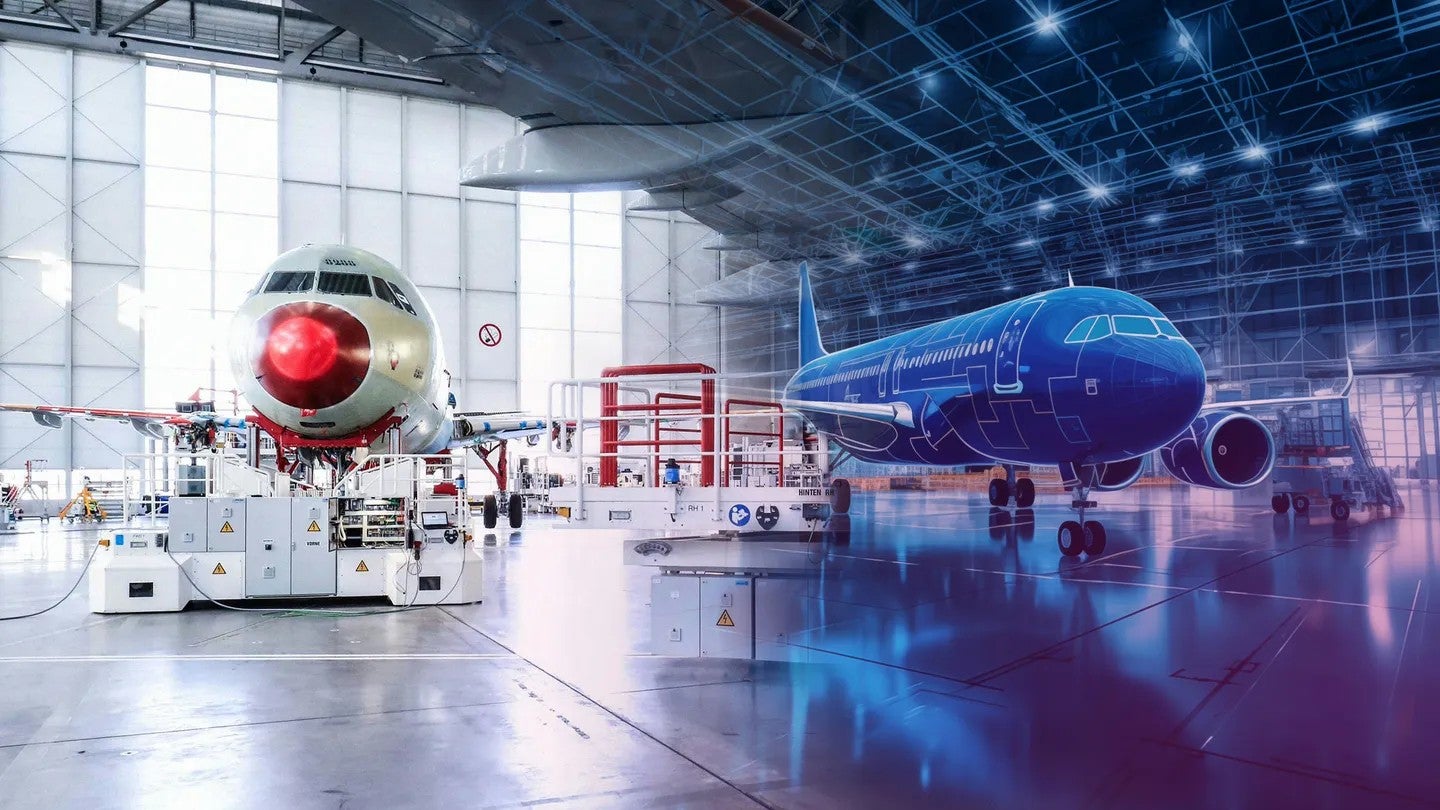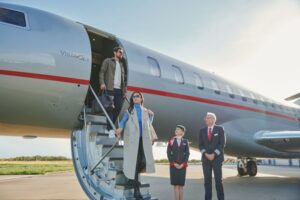Manufacturing titan Airbus has a trick up its sleeve that it says is transforming the way its aircraft are designed, built, flown, and maintained.
The company on Thursday pulled back the curtain on a tool it said it is deploying across all phases of the aircraft lifecycle: digital twins.
Airbus uploads information about its aircraft design, production, operations, and maintenance to a cloud database, where it can be fed into 3D models. The product, it says, is a “dynamic, living virtual replica….providing a continuous, real-time reflection of its real-world counterpart.”
Airbus told FLYING that it has not previously shared the extent of its digital twin technology, which it said it is deploying across all divisions—from commercial aircraft to helicopters to defense and space.
“We’re effectively building each aircraft twice: first in the digital world, and then in the real one,” the company said Thursday.
Airbus began using digital twins in 2019, under current CEO Guillaume Faury. That year, it signed a five-year agreement with France’s Dassault Systèmes (3DS) for the use of its 3DExperience platform, which creates virtual counterparts of aircraft, maintenance systems, and production flows. Airbus’ relationship with 3DS dates back to 2000, when it picked the firm’s CATIA software to develop the A3XX.
On Thursday, the companies extended their partnership to enable digital twinning for all future Airbus civil and military aircraft, including helicopters, 3DS said. More than 20,000 users, including suppliers, will be able to tap into the system.
Airbus said the virtual replicas are “revolutionizing how we conceive, build, and maintain aircraft” with improved speed, efficiency, safety, and cost savings. It is also using SAP’s digital twin platform.
“Digitalization is a key enabler that we are leveraging to support our core priorities, whether it is ramping up the production of our commercial aircraft, preparing the next generation of platforms that will further contribute to the decarbonization of our sector, or pioneering the defense and security solutions of tomorrow,” Faury said in a statement.
Airbus said digital twins are a “game changer” for product development. Engineers can use them to simulate how a concept might perform in various real-world scenarios and environments, using data from actual, in-service aircraft. That reduces the need for physical prototypes, which can speed time to market, the firm said.
With the A320 family, for example, Airbus collects 3D data on a “master” model to spot quality issues and accelerate lead times for orders comprising multiple aircraft with the same specifications. It also used modeling and simulated product flows to transform its former A380 assembly plant—one of the largest in Europe—into a final assembly line for the A321 and hugely popular A321neo. Shipments out of that facility began in 2023.
The technology can even create virtual twins of tools, workflows, and supply chains. Airbus deploys it at facilities in Hamburg, Germany; Toulouse, France; and Illescas, Spain, to compare real-time progress against theoretical production plans and identify gaps in oversight.
Another application is predictive maintenance. Airbus said more than 12,000 aircraft—approximately the number it has in service—are connected to Skywise, its flight data sharing platform. Live data from sensors throughout the aircraft allows more than 50,000 personnel to predict wear and tear before it happens, which translates to reduced downtime and longer-lasting components.
Airbus said the use of digital twin software is part of the company’s broader shift toward digital design, manufacturing, and services. The idea is to use analytics, simulations, and artificial intelligence to optimize the lifecycles of current and future aircraft—and digital twins will be a key piece of that effort.
“This renewed partnership with Dassault Systèmes will play an important role in accelerating our progress towards these goals, while ensuring the highest levels of quality, safety and security throughout the lifecycle of our products and solutions, from design to in-service operations,” Faury said.
Credit: flyingmag.com









